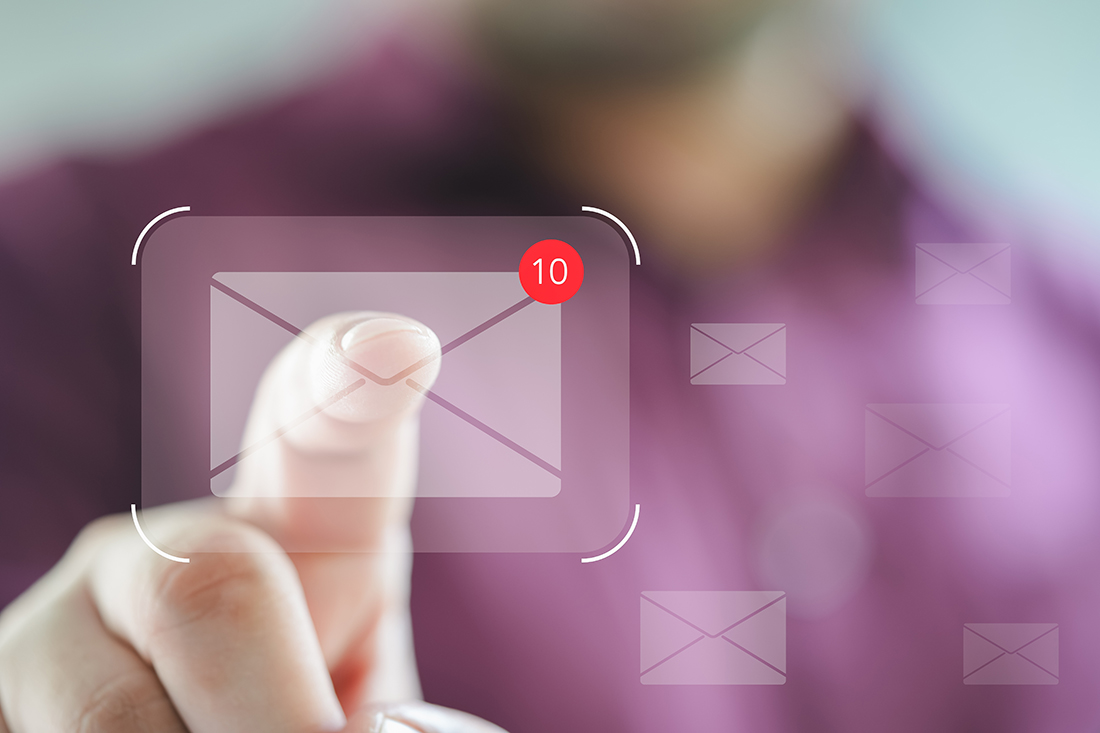
If the number of emails in your inbox just seems to tick up ominously day by day, maybe it’s time to try a new strategy. Laura Mae Martin is the executive productivity advisor at Google and author of Uptime, and her key to a productive inbox is simple: Sort it like laundry.
Martin says the way we tend to mix sorting, reading and answering emails is an energy drain.
“If you folded one shirt and wadded it up, then took out a pair of pants and didn’t feel like dealing with it and threw it back in the basket, you would never feel done with laundry,” Martin says. “It’s the same thing with your inbox.”
The problem with this method is that we push emails to the back burner. Martin says people can touch emails five or six times before taking action.
Instead, Martin recommends emptying the metaphorical dryer once or twice daily and sorting everything into its baskets.
Tackling an email clean up may seem overwhelming, but Martin points out that it isn’t as daunting as it feels. Even with thousands of emails in your inbox, not every email needs to be responded to. Going through your emails and dealing with each one can be counterproductive.
“If you lost your jewelry in a big pile of trash, you would just want to look for the jewelry and then sweep the rest of the trash away,” says Martin. “You wouldn’t want to pick up each piece of trash and say, ‘Do I need this?’”
Three steps for achieving an organized inbox
To get to that elusive inbox zero, Martin has three steps:
1. Unsubscribe
Martin’s first step is easy. Set a timer for 20 minutes and look for things to unsubscribe from.
“A really quick way to see a lot of these emails is just searching your inbox for the word unsubscribe because that’ll show you all the emails that are probably not directed to you,” says Martin. She explains that any newsletter you’re on will have the word unsubscribe.
What about the newsletters you want to continue receiving? Create a newsletter folder. This way, they don’t go into your primary inbox but will stay in your newsletter folder for when you have the time to read them.
“Even by taking 20 minutes to sort through what’s come in the last week, you’re probably hitting most of those subscriptions,” says Martin. “You don’t have to go through 10 weeks of emails.”
She explains that an email’s lifecycle is only about three weeks. If an email from more than a month ago is important enough, you’ll either remember it at some point, or someone will bump it back up.
2. Create rules for important emails
Create filters so you don’t miss important emails. Martin says you can create rules that automatically label certain emails.
“If this email is from my boss to me—and not to the whole org or whole team—have it in bright red that says VIP,” says Martin.
She suggests taking some time to think about which emails are critical. She also recommends setting a rule to highlight external emails, calendar invites, emails from VIPs, emails from internal tools (such as when someone leaves a Google Doc comment) and emails from important clients.
Creating these filters allows you to examine your inbox and identify which emails are actually priorities. Martin says this is especially helpful if you’re in meetings or traveling. A quick glance can catch the emails that must be addressed immediately.
3. Categorize: read, review, respond
You’re ready to categorize once you’ve laid the groundwork for your inbox by unsubscribing and setting rules for the important emails.
At this point, Martin says the question should be “what am I doing with this email” rather than “what type of email is this?”
Martin has three categories, or laundry baskets, into which she classifies emails.
“Read is emails I want to read, but if I never did, nothing would ever happen,” says Martin. “That’s newsletters, case studies, etc.”
The second category is review.
“Review is usually when you don’t own the action, but you need to bump it back up to somebody,” says Martin. “So you need to review it on an ongoing basis, saying ‘I’m still owed this information from this person, and they’re not getting back to me.’”
Lastly, there is the respond category. Martin says this category is self-explanatory. It’s an email that you have to take action on, and someone else is waiting for your response.
What do you do with the rest of the emails that don’t fit into the read, review and respond? Delete them, or if you think you may need them one day, Martin suggests archiving them.
Life after an email clean up
Martin says that reorganizing your email inbox shouldn’t take very long. She recommends taking an hour on the weekend with 20 minutes for each step. Once you’ve switched to her system, she says your inbox becomes about sorting active new emails.
“When you have those labels on emails, you’re actually sliding them into those laundry baskets, and you’re able to view just the laundry basket,” Martin says. “Inbox zero just means that everything’s in a basket. You can go to bed knowing that you touched everything.
Organizing your inbox is not just about decluttering your digital space; it’s about managing your energy and boosting productivity.
“Once you do it, your biggest regret is going to be, ‘I should have just done this before because it’s saving me so much time and energy,’” Martin says. She explains that hot topics like time management, email management and workload management all boil down to energy management.
Martin explains that organizing your inbox can lead to less stress, more time and lighter-feeling workdays and evenings.
“All of those pieces are important to the bigger picture, which is your longevity, creativity and ability to produce vision and new ideas,” Martin says.
Photo credit Shutterstock/Dontree_M




